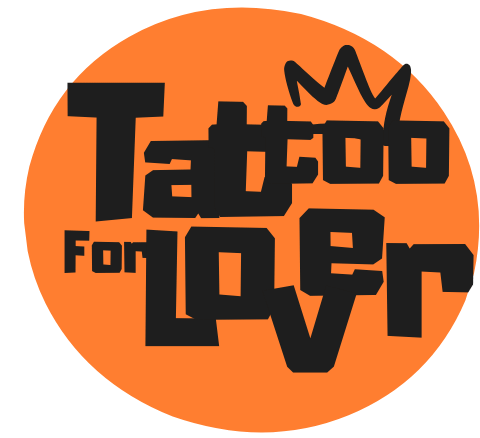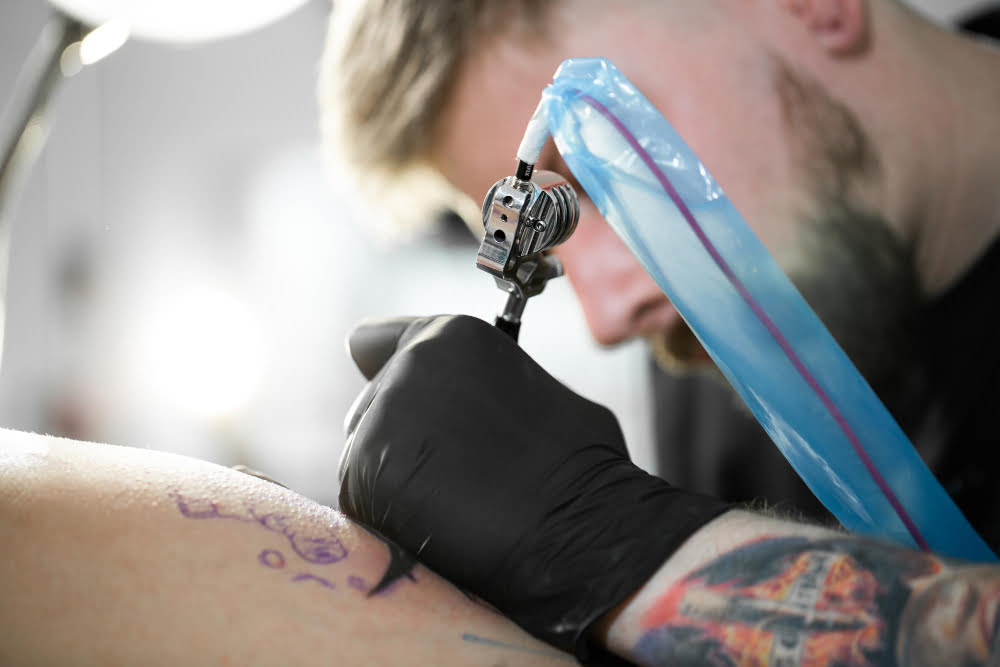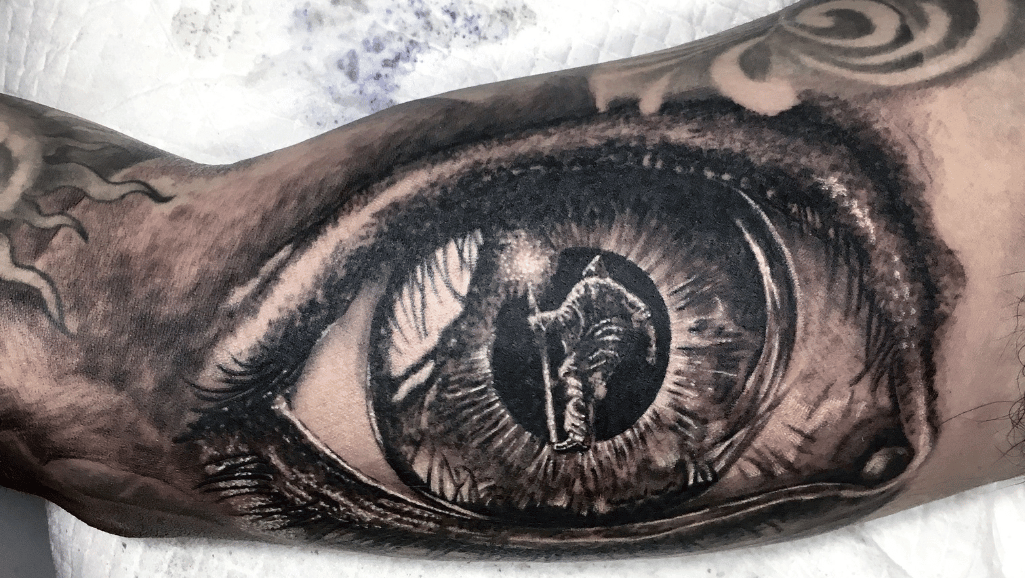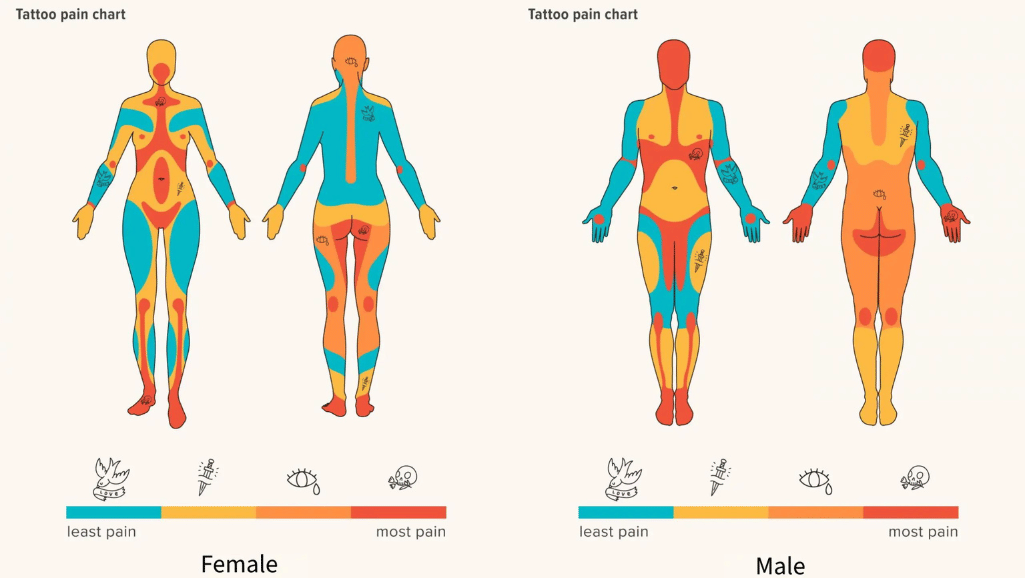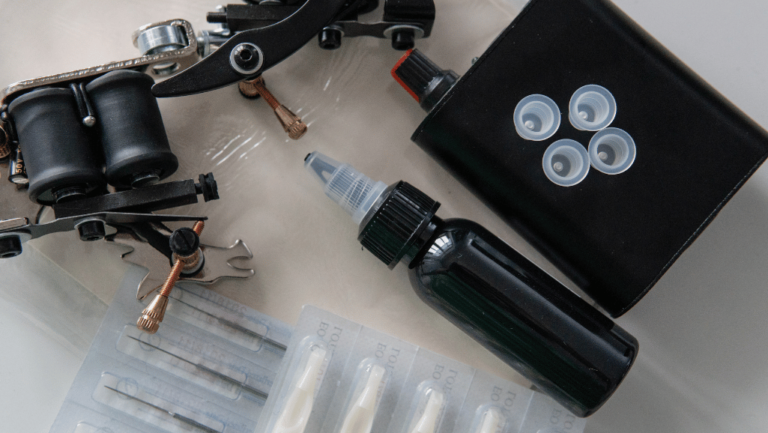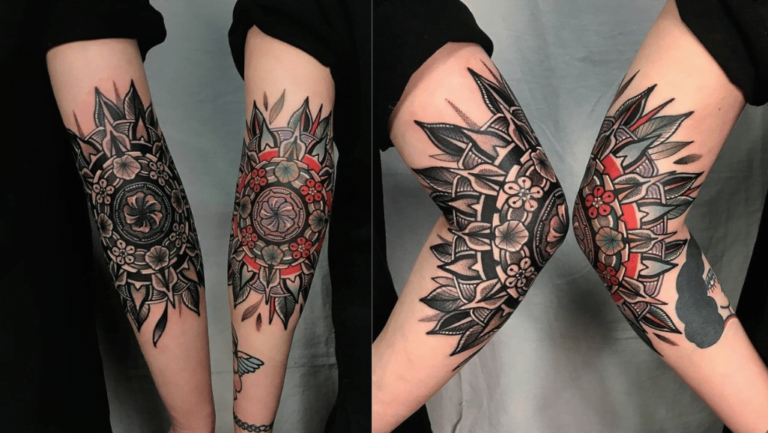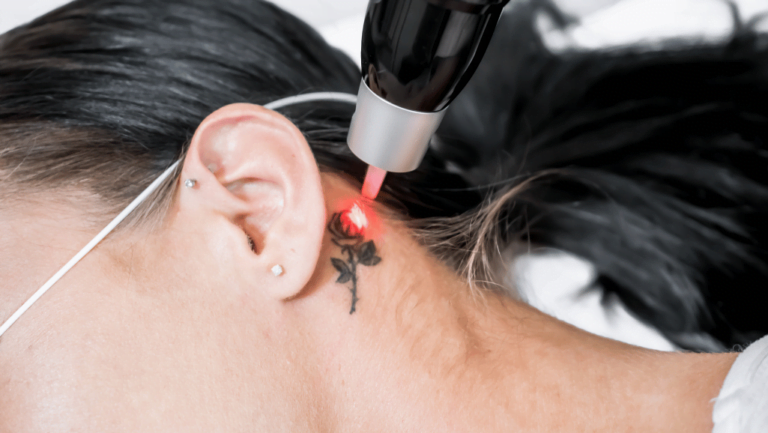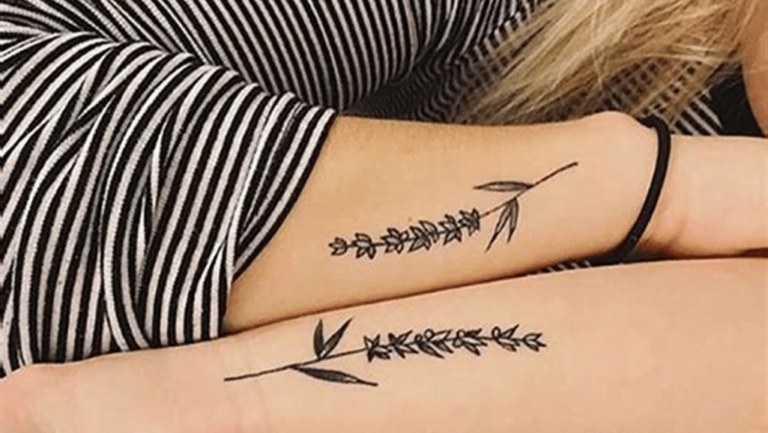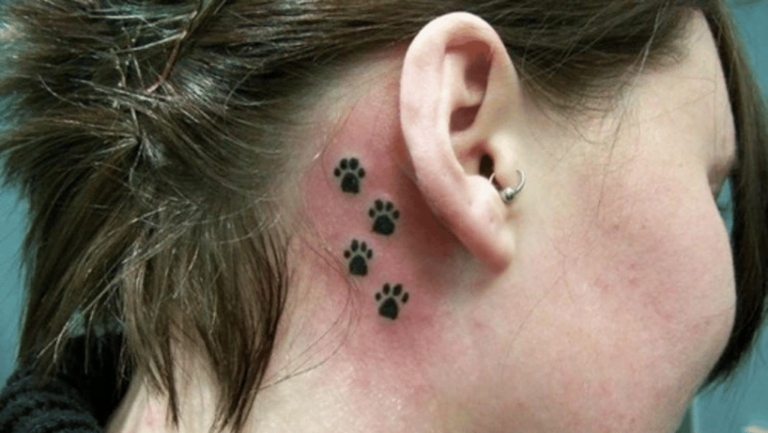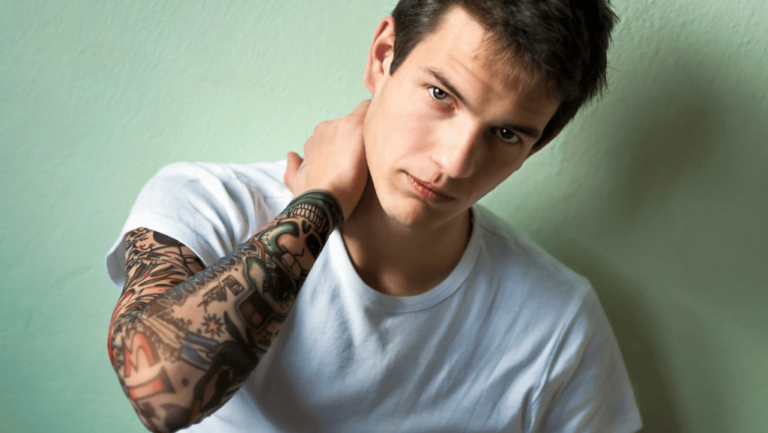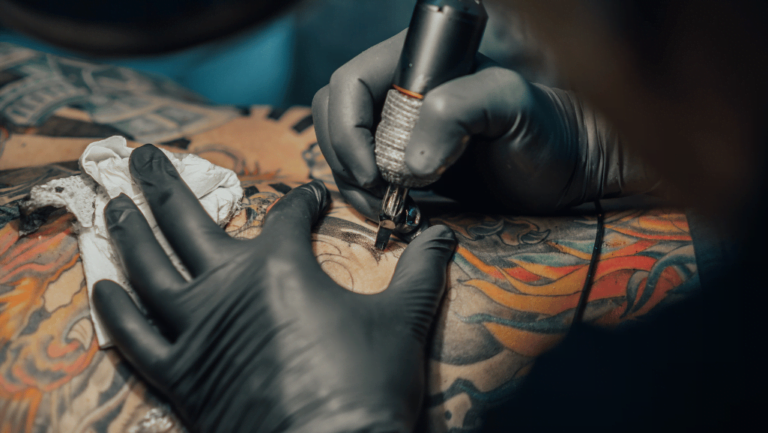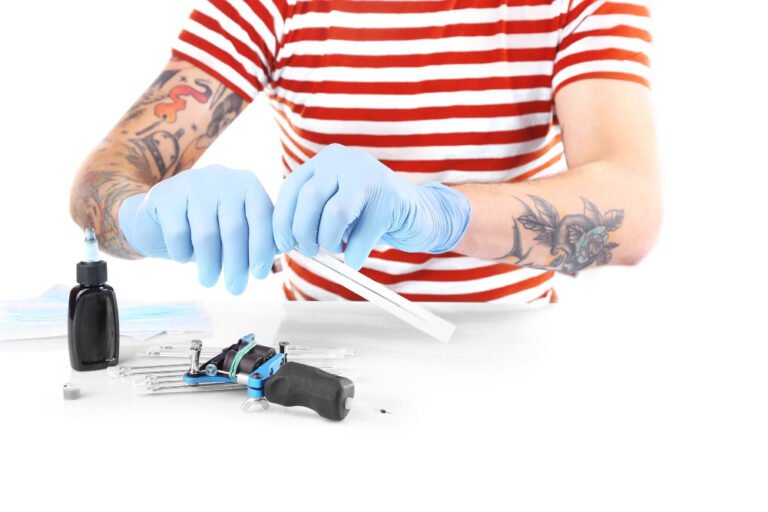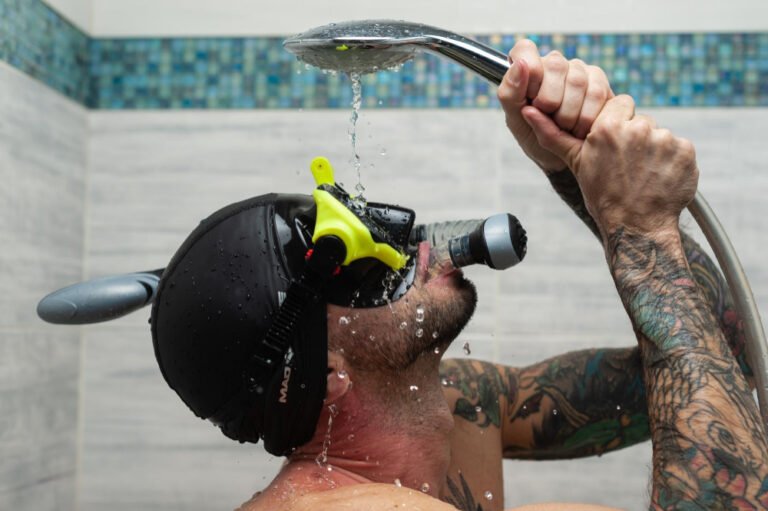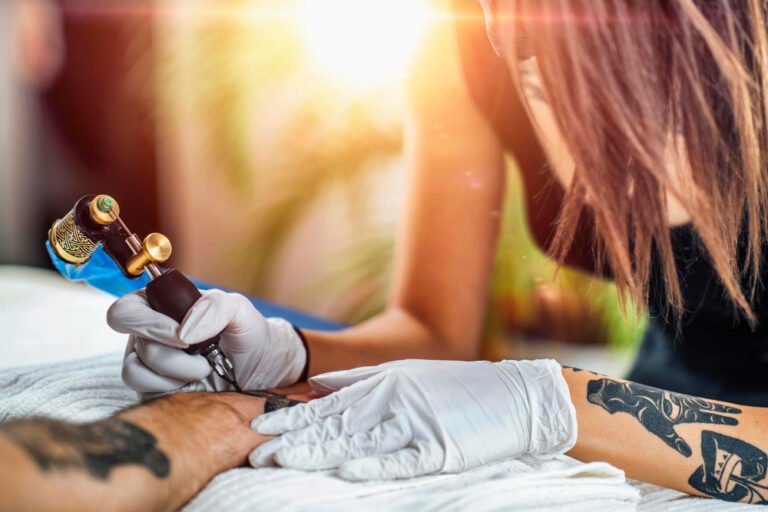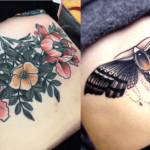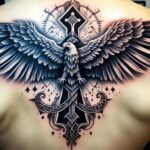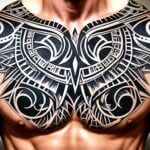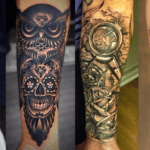Getting a tattoo involves some level of pain, but the intensity can vary based on factors such as the tattoo’s location and an individual’s pain tolerance. Bony areas, areas with thin skin, and areas with a high concentration of nerve endings tend to be more painful to tattoo. The bicep is a common location for tattoos, and many people wonder about the pain level associated with it. While pain is subjective and varies from person to person, it’s important to understand what to expect when getting a bicep tattoo.
Key Takeaways:
- The level of pain experienced during a bicep tattoo can vary depending on factors such as tattoo location and individual pain tolerance.
- Bony areas, areas with thin skin, and areas with a high concentration of nerve endings tend to be more painful to tattoo.
- Understanding the potential pain points of a bicep tattoo can help individuals make informed decisions about tattoo placement.
- Pain perception can be influenced by factors such as sex, age, and previous tattoo experience.
- Proper preparation and communication with a skilled tattoo artist can help manage and minimize bicep tattoo pain.
Factors that Affect Bicep Tattoo Pain
When getting a bicep tattoo, several factors come into play that can influence the level of pain experienced. These factors include biological sex, age, weight, and previous tattoo experience. Let’s explore each factor in detail:
Biological Sex:
Women tend to experience pain more intensely during a bicep tattoo. However, it’s important to note that women may also have a higher pain tolerance, allowing them to handle the discomfort more effectively.
Age:
As we age, our skin becomes thinner and more sensitive. This can result in increased pain during a bicep tattoo, especially for older individuals. The thinner skin allows the tattoo needle to penetrate deeper, leading to a higher level of discomfort.
Weight:
Individuals with low body fat may experience more pain during a bicep tattoo. The lack of padding in the form of body fat means that there is less cushioning between the tattoo needle and the muscle, resulting in an increased sensation of pain.
Previous Tattoo Experience:
Those who have had tattoos before may perceive less pain during a bicep tattoo. This is because they are already familiar with the sensation and have developed a higher pain threshold over time. However, it’s important to note that each tattoo experience is unique, and pain levels can still vary.
By considering these factors, individuals can gain a better understanding of what to expect during a bicep tattoo and take steps to minimize any discomfort or pain. It’s important to communicate openly with the tattoo artist and express any concerns or preferences. Additionally, taking proper care of the tattoo during the healing process can contribute to a more positive bicep tattoo experience.
See the table below for a summary of the factors affecting bicep tattoo pain:
| Factors | Description |
|---|---|
| Biological Sex | Women may experience pain more intensely but may also have a higher pain tolerance. |
| Age | Thinner, more sensitive skin in older individuals can lead to increased pain during a bicep tattoo. |
| Weight | Low body fat can result in less padding and increased pain during a bicep tattoo. |
| Previous Tattoo Experience | Those with previous tattoo experience may have a higher pain threshold during a bicep tattoo. |
Remember, pain is subjective and can vary from person to person. Your bicep tattoo experience may be different from someone else’s, but understanding these factors can help you better prepare for and manage any discomfort or pain that may arise.
Most Painful Bicep Tattoo Spots
While pain experienced during tattooing is subjective, certain areas of the bicep are commonly known to be more painful. It’s important to note that pain tolerance varies from person to person, so what one individual finds unbearable might be manageable for another. However, understanding the potential pain points can help individuals make informed decisions about their bicep tattoo placement.
The inner bicep, characterized by soft and sensitive skin, can be quite painful to tattoo. Tattooing this area involves working close to the armpit, which is known to have a high concentration of nerve endings. Consequently, the armpit area is often advised against for tattooing due to its extreme sensitivity and the accompanying high level of pain.
Other areas of the bicep that can be particularly painful to tattoo include the elbow, inner forearm, and behind the knee. These areas may have thinner skin, less muscle, or a higher concentration of nerve endings, leading to increased pain during the tattooing process.
Overall, it’s crucial to consider your pain tolerance and consult with an experienced tattoo artist when deciding on the placement of your bicep tattoo. Now, let’s take a look at a comparative table of bicep tattoo pain levels for different areas of the bicep.
| Bicep Tattoo Area | Pain Level (On a Scale of 1-10) |
|---|---|
| Inner Bicep | 8 |
| Armpit | 9 |
| Elbow | 7 |
| Inner Forearm | 6 |
| Behind the Knee | 6 |
These pain levels are subjective and can vary from person to person. What might be extremely painful for some could be tolerable for others. It’s essential to communicate openly with your tattoo artist about your pain threshold and carefully consider the placement of your bicep tattoo based on your individual factors.
Least Painful Bicep Tattoo Spots
When it comes to getting a tattoo on your bicep, there are certain areas that typically cause less pain. If you’re looking for the easiest place to get a tattoo on your bicep, consider the following spots:
1. Outer Bicep
The outer bicep is generally considered less painful for tattooing because it has more muscle and fewer nerve endings compared to other areas. The thicker muscle tissue provides more cushioning, resulting in a milder pain experience. If you’re concerned about the pain level for bicep tattoos, the outer bicep might be a good option for you.
2. Upper and Lower Parts of the Back of the Arm
The upper and lower parts of the back of the arm also tend to be less painful for bicep tattoos. These areas have thicker skin and more padding, which can help reduce the pain. If pain minimization is a priority for you, consider discussing these areas with your tattoo artist when deciding on your tattoo placement.
3. Upper Outer Thigh
While not directly on the bicep, the upper outer thigh is another area that can be a less painful option for tattooing. Similar to the outer bicep, the upper outer thigh has more muscle and less sensitivity compared to other areas. If you’re open to exploring different locations for your bicep tattoo, the upper outer thigh may provide a more comfortable experience.
Remember, everyone’s pain tolerance is different, and what might be easiest for one person may vary for another. It’s essential to communicate with your tattoo artist and discuss your preferences and pain tolerance before deciding on the placement of your bicep tattoo.
Tattoo Pain Chart for Bicep Tattoos
When considering getting a bicep tattoo, it’s natural to wonder about the pain level associated with the process. While pain is subjective and can vary from person to person, a tattoo pain chart can provide a general idea of the pain levels based on different factors.
The pain chart takes into account various elements such as nerve endings, bone proximity, and skin thickness. These factors can significantly influence the level of pain experienced during a tattoo session, including bicep tattoos.
According to the pain chart, certain areas of the bicep tend to be more painful than others. The armpit, rib cage, elbow, and inner bicep are often considered the most painful spots for bicep tattoos. These regions typically have thinner skin, a higher concentration of nerve endings, and proximity to bones, resulting in increased sensitivity and discomfort during the tattooing process.
On the other hand, areas with more padding, thicker skin, and fewer nerve endings tend to be less painful for bicep tattoos. The outer bicep and upper outer thigh are examples of such areas that generally cause less pain.
Keep in mind that individual pain tolerance and perception can still vary, even within these general guidelines. It’s crucial to consult with your tattoo artist, who can provide personalized insights and recommendations based on their experience and your specific anatomy.
| Most Painful Bicep Tattoo Spots | Least Painful Bicep Tattoo Spots |
|---|---|
| The armpit | The outer bicep |
| The rib cage | The upper outer thigh |
| The elbow | |
| The inner bicep |
Factors that Affect Tattoo Pain
In addition to the specific location on the body, several factors can influence the overall pain experienced during a tattoo. Understanding these factors can help individuals manage and minimize tattoo pain. Let’s take a closer look at these factors:
Pain Tolerance
An individual’s pain tolerance plays a significant role in how they perceive and handle tattoo pain. Some people naturally have a higher pain threshold, allowing them to endure the process more easily. Others may have a lower pain tolerance, making the experience more challenging. It’s important to know your own pain tolerance and communicate it with your tattoo artist.
Type of Tattoo Work
The type of tattoo work being done can also influence the level of pain experienced. Tattoo techniques such as heavy shading or delicate line work may cause varying degrees of discomfort. The depth of the needle and the duration of the tattoo session can also affect pain levels. Discussing your design and tattoo goals with your artist can help you understand what to expect during the process.
Skill Level of the Tattoo Artist
The skill level of the tattoo artist can impact the pain experienced during a tattoo. A highly skilled artist who understands proper technique can minimize discomfort by using the right needle size, applying appropriate pressure, and maintaining a steady hand. Choosing an experienced and reputable artist can make a significant difference in your tattoo experience.
Sex and Age
Sex and age can also play a role in tattoo pain perception. Women tend to experience pain more intensely than men, but they may also have a higher pain tolerance. Additionally, older individuals may have thinner, more sensitive skin, which can make the tattooing process more uncomfortable. It’s essential to consider these factors when planning your tattoo and discussing expectations with your artist.
By considering your pain tolerance, the type of tattoo work, the skill level of the artist, and factors like sex and age, you can take steps to manage and minimize tattoo pain. Remember to communicate openly with your tattoo artist about your concerns and preferences, as they can provide valuable guidance and help ensure a more comfortable tattooing experience.
Tattoo Pain Descriptions
When getting a bicep tattoo, it’s essential to understand the different sensations that can be experienced during the tattooing process. By familiarizing yourself with these pain descriptions, you can better prepare for your bicep tattoo experience and differentiate between normal tattoo pain and potential issues during the healing process.
Burning Pain
One common type of tattoo pain is a burning sensation. This pain is characterized by a hot, searing feeling on the skin during the tattooing process. It can be intense and may cause discomfort, but it is usually temporary.
Dull or Background Pain
Another type of tattoo pain is a dull or background pain, which is a more generalized ache associated with the tattooing process. This pain can manifest as a continuous, throbbing sensation throughout the tattooing session and may persist after the tattoo is complete. It is important to note that this pain should gradually subside as the tattoo heals.
By being aware of these different types of tattoo pain, you can better manage your expectations and communicate with your tattoo artist to ensure a more comfortable bicep tattoo experience.
| Type of Pain | Description |
|---|---|
| Burning Pain | A hot, searing sensation on the skin during the tattooing process. |
| Dull or Background Pain | A more generalized ache associated with the tattooing process, often throbbing in nature. |
Conclusion
When it comes to getting a bicep tattoo, the level of pain can vary from person to person. Factors such as the tattoo’s location, individual pain tolerance, and previous tattoo experience play a significant role in determining the level of discomfort one may experience. While some individuals may find getting a bicep tattoo to be relatively painless, others may experience varying degrees of pain.
It is important for individuals to understand that pain is subjective, and what may be painful for one person may be tolerable for another. Communicating openly with your tattoo artist about your pain tolerance, preferences, and concerns can help create a more comfortable tattooing experience. Additionally, preparing for the tattoo by taking care of your physical and mental well-being can also help manage the pain.
Remember, getting a bicep tattoo is a personal choice, and everyone’s pain threshold is different. If you are considering getting a bicep tattoo and are concerned about the pain, it may be helpful to consult with experienced tattoo artists or individuals who have bicep tattoos to gain insight into their experiences. Ultimately, with proper preparation, communication, and an experienced tattoo artist, individuals can navigate the pain and have a more comfortable bicep tattoo experience.
FAQ
Does getting a bicep tattoo hurt?
What factors can affect the pain level of a bicep tattoo?
What are the most painful spots for a bicep tattoo?
What are the least painful spots for a bicep tattoo?
Is there a pain chart for bicep tattoos?
What factors can affect tattoo pain in general?
What are the different types of tattoo pain?
In conclusion, does a bicep tattoo hurt?
Forhad
Forhad's writing is not just about the artistry of tattoos or the latest trends in the industry; it's an exploration of the deep-rooted connections people have with their tattoos, reflecting personal narratives, cultural histories, and moments of transformation. Through a mix of in-depth features, personal narratives, and insightful analyses, he sheds light on the multifaceted nature of tattooing, revealing the emotional and cultural layers that lie beneath the surface.

